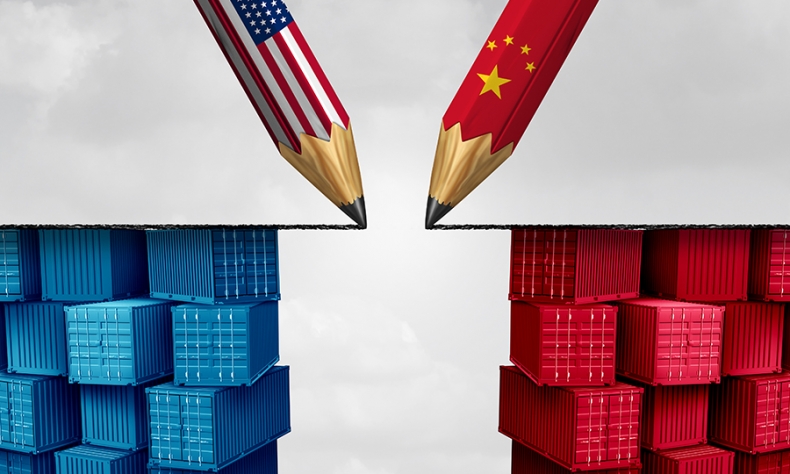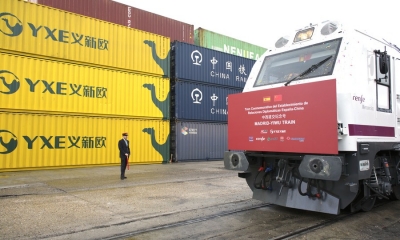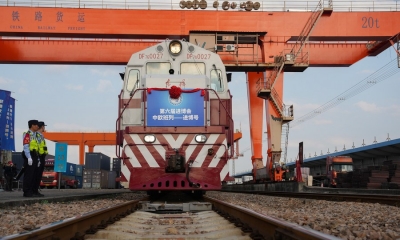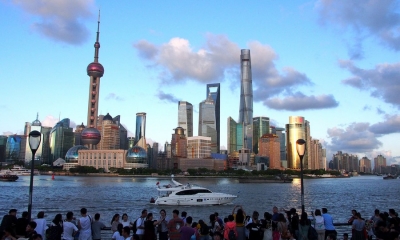Trade Dialogue Resumption Signals Greater US-China Stability

China has persistently acted as a defender of open multilateral trade and will subsequently strive to cooperate with Washington. These phone calls thus mark the start of something constructive, meaningful and hopefully fruitful – all of which have been lacking for years.
China’s Minister of Commerce Wang Wentao held a phone conversation with his U.S. counterpart Secretary of Commerce Gina Raimondo last week. According to reports, the two officials affirmed the importance of dialogue and exchanges in the business field between China and the United States, and agreed to promote the “healthy” development of trade and investment cooperation with a view to “properly” handling differences. The call was the third on the subject of U.S.-China trade in recent weeks, with Vice Premier Liu He having previously spoken with U.S. trade representative Katherine Tai and Secretary of the Treasury Janet Yellen.
Although the American readings of such talks have often laundered a list of complaints or demands, few can deny that the resumption of regular dialogue between Washington and Beijing is positive news. Ultimately, it will usher in a period of greater stability rather than the reckless, destructive approach of Donald Trump. While the Biden administration has nonetheless adopted his protectionist agenda and the mantra of “America First,” it has shown signs of pragmatism in the extensive trade and commercial relationship with Beijing and a narrower strategic focus, as opposed to indiscriminately seeking to decouple the two countries.
However, for the time being the extensive tariffs put in place by Trump remain and the new presidency will not be able to remove them ad hoc unless it can market doing so as a win for American workers, meaning negotiations between the U.S. and China must ultimately follow. Of course, this does not change the apparent acknowledgement between the two sides that the “trade war” Trump pursued was a self-destructive, self-defeating and lose-lose approach to commercial issues. Differences between the two countries remain, but it is now time to push for a new era of stabilizing trade dialogue and look accordingly to navigate a fair path out of it, one which is better aligned to the interests of both countries.
The rise of protectionist sentiment in the United States is the product of a country which feels increasingly displaced by globalization that has led to a perception among the working classes of being “left behind.” Although the previous president scapegoated China for the depletion of America’s industrial base, such a shift was a structural product of the U.S. economic system from the 1980s onwards which prioritized open and free markets to the point where businesses were incentivized to offshore manufacturing to countries where it was cheaper to do so, not because of Chinese “state subsidies.” This has led to the prevailing political view of seeking to restore jobs in the United States and opposition to free trade as a whole, which has extended far beyond the issue of China.
In reality, the American and Chinese economies are highly interconnected and remain dependent on each other for prosperity, in spite of geopolitical frictions. It is impossible to change this without fundamentally cutting up the global economy altogether. Trump’s trade war did not diminish U.S.-China trade in any way, nor did it lead to a reconfiguring of the supply chain – it simply made things more expensive for businesses, which has contributed to underlying inflation. As such, despite all the differences and political agendas at stake it is an inevitable consequence that following the departure of Trump’s disruptive influence, the countries are gravitating toward dialogue again. Stability still remains a mutual interest.
China is ultimately ready to talk, and is likewise ready to make concessions in order to incorporate America’s concerns for the greater good and build on the “phase one” deal already secured. Since Trump, China’s trade strategy has been to expand free trade and the opening of its markets. In 2020, it completed the regional comprehensive economic partnership with ASEAN, South Korea, Japan and Australia, upgraded its FTA with New Zealand and also secured a deal in principle with the European Union on the comprehensive investment agreement.
China has persistently acted as a defender of open multilateral trade and will subsequently strive to cooperate with Washington. These phone calls thus mark the start of something constructive, meaningful and hopefully fruitful – all of which have been lacking for years.
 Facebook
Facebook
 Twitter
Twitter
 Linkedin
Linkedin
 Google +
Google +







